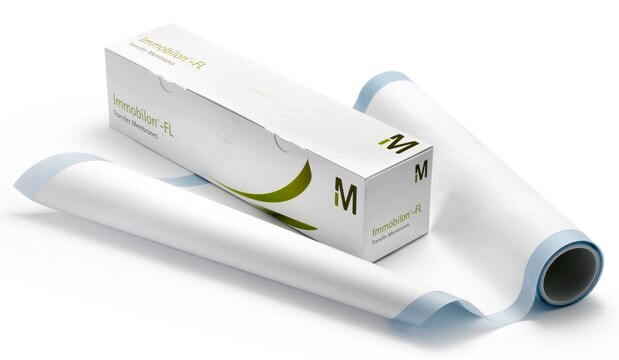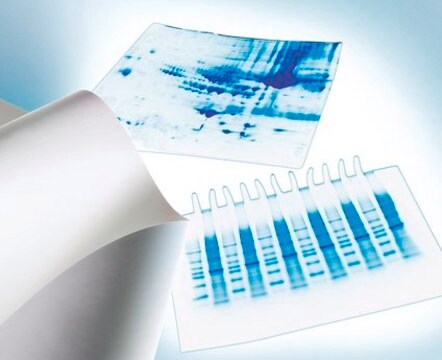MABF2069
Anti-Glucuronoxylomannan (GXM) Antibody, clone 18B7
clone 18B7, from mouse
Sinonimo/i:
GXM
About This Item
Prodotti consigliati
Origine biologica
mouse
Livello qualitativo
Forma dell’anticorpo
purified immunoglobulin
Tipo di anticorpo
primary antibodies
Clone
18B7, monoclonal
Reattività contro le specie
mouse
tecniche
ELISA: suitable
immunocytochemistry: suitable
immunodepletion: suitable
immunofluorescence: suitable
immunohistochemistry: suitable (paraffin)
Isotipo
IgG1κ
Condizioni di spedizione
ambient
modifica post-traduzionali bersaglio
unmodified
Descrizione generale
Specificità
Immunogeno
Applicazioni
Immunodepletion Analysis: A representative lot immunodepleted Glucuronoxylomannan (GXM) in Immunodepletion applications (Lendvai, N., et. al. (1999). J Infect Dis. 180(3):791-801; Casadevall, A., et. al. (1998). Antimicrob Agents Chemother. 42(6):1437-46; Martinez, L.R., et. al. (2004). Infect Immun. 72(6):3674-9; Bowen, A., et. al. (2017). J Biol Chem. 292(2):417-434).
Immunofluorescence Analysis: A representative lot detected Glucuronoxylomannan (GXM) in Immunofluorescence applications (Casadevall, A., et. al. (1998). Antimicrob Agents Chemother. 42(6):1437-46; Bowen, A., et. al. (2017). J Biol Chem. 292(2):417-434).
Immunocytochemistry Analysis: A 1:1,000 dilution from a representative lot detected Glucuronoxylomannan (GXM) in heat killed cryptococcus cells.
Immunohistochemistry Analysis: A 1:50-250 dilution from a representative lot detected Glucuronoxylomannan (GXM) in S. neoformans-infected mouse spleen, mouse lung, mouse liver, and mouse brain tissues.
ELISA Analysis: A representative lot detected Glucuronoxylomannan (GXM) in ELISA applications (Casadevall, A., et. al. (1998). Antimicrob Agents Chemother. 42(6):1437-46; Martinez, L.R., et. al. (2004). Infect Immun. 72(6):3674-9; Bowen, A., et. al. (2017). J Biol Chem. 292(2):417-434).
Inflammation & Immunology
Qualità
Isotyping Analysis: The identity of this monoclonal antibody is confirmed by isotyping test to be mouse IgG1 .
Stato fisico
Stoccaggio e stabilità
Altre note
Esclusione di responsabilità
Non trovi il prodotto giusto?
Prova il nostro Motore di ricerca dei prodotti.
Codice della classe di stoccaggio
12 - Non Combustible Liquids
Classe di pericolosità dell'acqua (WGK)
WGK 2
Certificati d'analisi (COA)
Cerca il Certificati d'analisi (COA) digitando il numero di lotto/batch corrispondente. I numeri di lotto o di batch sono stampati sull'etichetta dei prodotti dopo la parola ‘Lotto’ o ‘Batch’.
Possiedi già questo prodotto?
I documenti relativi ai prodotti acquistati recentemente sono disponibili nell’Archivio dei documenti.
Il team dei nostri ricercatori vanta grande esperienza in tutte le aree della ricerca quali Life Science, scienza dei materiali, sintesi chimica, cromatografia, discipline analitiche, ecc..
Contatta l'Assistenza Tecnica.







